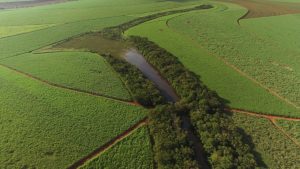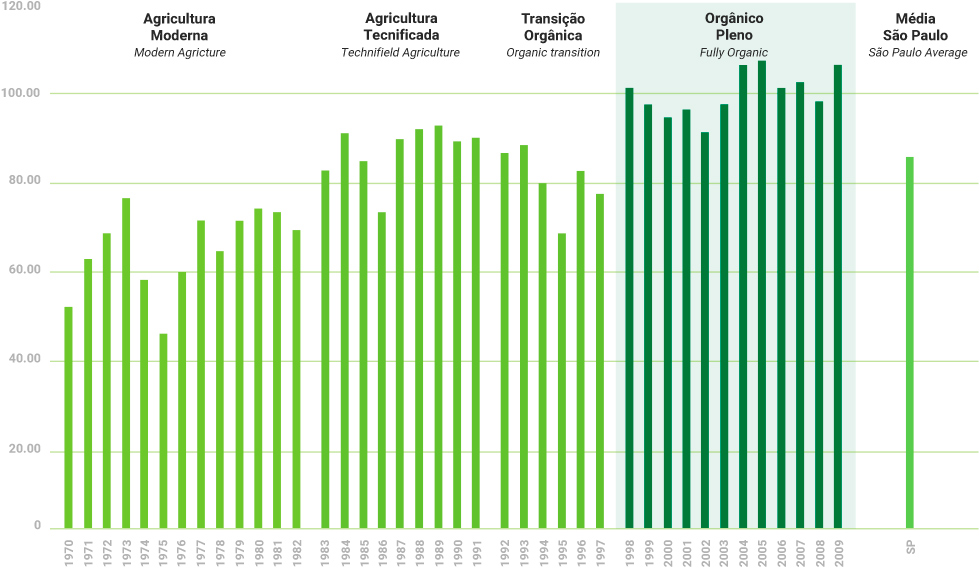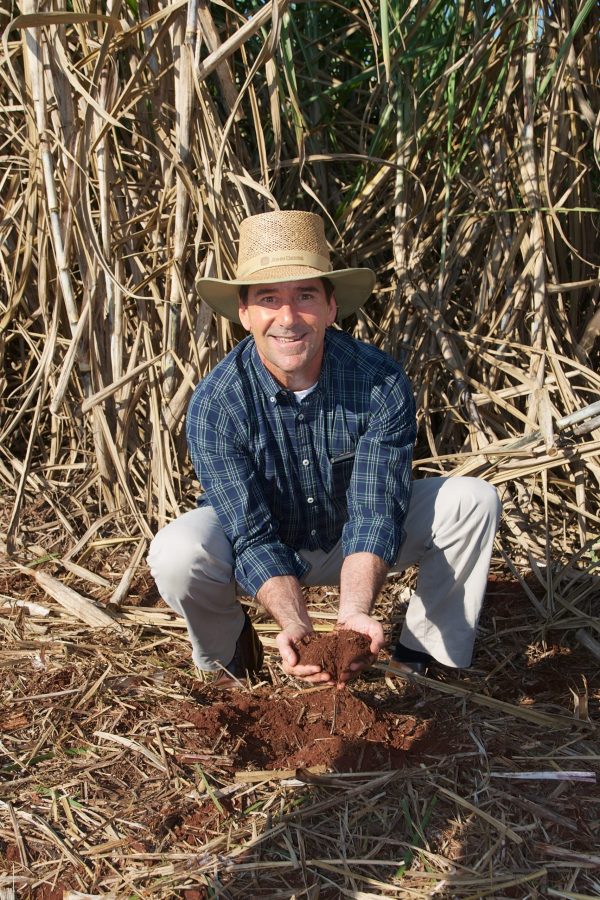Brazilian sugarcane producer pioneers green cane harvesting, revolutionizes sugarcane production
Sugarcane production in Florida, the U.S.’s leading producer of sugarcane to make sugar, is a dirty business. The fields, which are near the Everglades, are burned prior to harvest to eliminate the sugarcane plants’ leaves and tops, called “trash,” to make harvesting the cane stalks easier. The burning creates toxic compounds such as benzene, carbon monoxide, and dioxins. People living near the state’s sugarcane fields suffer from respiratory ailments such as asthma and chronic obstructive pulmonary disease, as well as cancer and kidney disease. The burning causes soil erosion and nutrient runoff, which pollutes waterways. Nearby Lake Okeechobee is plagued by algal blooms from the runoff.
Solving the problem of burning sugarcane
Fortunately, there is a better way to grow and harvest sugarcane, and an innovative company in Brazil is leading the way. Natíve Green Cane Project, based in the state of São Paulo, pioneered the use of mechanical, “green harvesting” that eliminates the toxic burning while building healthy soils and increasing biodiversity.
Leontino Balbo Jr., executive vice president at Natíve and grandson of the founder of the Balbo Sugar Group, spearheaded development of a green harvester that has revolutionized the sugarcane industry. After graduating from São Paulo State University’s School of Agriculture with a degree as an agronomist engineer in 1984, Leontino wanted to solve the problem of burning sugarcane because he saw the damage it was doing to the environment.
“He realized that it didn’t make sense to continue to burn fields,” says Andrew Martino, category manager for sugar at Global Organics, which imports Natíve’s sugar to the U.S.
Leontino learned that Australia was using a mechanical harvester to cut down the entire sugarcane stalk. But their harvester wouldn’t work with Brazil’s sugarcane plants, which were bigger and thicker. Leontino went to work adapting Australia’s harvester for Natíve’s fields.
“He built a machine shop on the back of flatbed truck,” Martino says. “He literally developed it in the field.”
In a painstaking process that took thousands of hours, Leontino and his team solved technical challenges and custom built a green harvester, one that would harvest the sugar cane stalks, while stripping and shredding the leaves and spreading them on the fields as mulch. The leaves create biomass that protects the soil from the hot Brazilian sun that can kill the soil’s microbial life. The leaves also provide a rich layer of compost to build soil fertility, which reduces the need for chemical fertilizers.
“This encourages the natural systems in the field—the bacteria and fungi—to bring that plant material back into the soil,” Martino says.
Increased soil health
As a result, the amount of organic matter in Natíve’s fields increased from 1% in the 1980s to more than 3% today, just below the 4% of nearby native forests. The increased organic matter absorbs more moisture, as much as three times more than conventional fields.
“The soil is more aerated and able to withstand increases in water and holds water during droughts,” Martino says.

Natíve’s sugarcane production increases biodiversity as seen in this waterway surrounded by sugarcane fields
The cane is harvested and put into special trucks that have wide low-pressure tires that tread lightly on the ground without compacting the soil. The tires can literally run over someone’s foot without hurting it.
Patrick Ferguson, an attorney and organizing representative with Sierra Club’s Stop Sugar Field Burning Campaign in Florida, says he visited Natíve’s fields with “healthy skepticism” because he is familiar with the problems of Florida’s sugarcane production. But his mind was changed after seeing University of São Paulo research showing that Natíve’s soils contained more biodiversity than soils in the state’s national parks. To Ferguson, this was a good sign that Natíve was producing a healthy product.
“Healthy diversity works its way up the food production chain,” he says.
Leontino’s commitment to increasing biodiversity extends beyond his sugarcane fields. He launched a reforestation project in the 1980s that planted 2.6 million trees, and created 11,400 acres of “biodiversity islands.” A study conducted by researchers from the Brazilian Agricultural Research Corporation (Embrapa) and the Federal University of São Carlos (Ufscar) found that 340 species of mammals, birds, reptiles and amphibians were identified in Natíve’s farms, 49 of which were considered endangered species in the state of São Paulo.
Leontino’s pioneering work with green harvesting in 1987 revolutionized the sugarcane industry, making it the standard practice to harvest sugarcane. Burning became a thing of the past in Brazil and other countries. Today, 97% all sugarcane grown in São Paulo is green harvested.
By contrast, Florida’s sugarcane fields still burn. Ferguson says the sugar industry there could adopt green harvesting but it doesn’t want to change even in the face of mounting public pressure.
“There’s a lot of room for innovation but it requires investment. The industry is fighting to maintain the status quo,” he says.
Regenerative Organic Certification
Seeing the benefits of green harvesting, Natíve began transitioning their entire production of 20,000 hectares (more than 49,000 acres) to organic in the mid-1990s and became certified in 1996. One of the world’s largest organic farming projects, Natíve now produces one-fifth of the world’s organic sugar and exports it to 64 countries.
“They are managing a land area bigger than Boston,” Martino says.
Natíve’s efforts to improve soil health led the company to earn Regenerative Organic Certification, a program that recognizes soil building efforts.
“My aim, since I began this work, has been to achieve agricultural self-sufficiency, a way to preserve the natural resources we need now—water, soil fertility, biodiversity, and the atmosphere,” Leontino says.
“Regenerative agriculture is a buzzword but Natíve brand is a shining example of regenerative agriculture,” Ferguson says.
Natíve’s sugarcane is not only regenerative organic but also produces yields that are 20% higher than conventional sugarcane production.
“The cane grows better and is more drought and pest resistant,” Martino says.
Sugarcane is a perennial tropical grass that grows back after it’s harvested. Natíve’s sugarcane plants produce 6-7 harvests before they have to be re-planted while conventional sugarcane plants produce four. After its production cycle, Natíve plants cover crops to enrich the soil before the next sugar cane crop is planted.

Natíve’s organic sugarcane produces yields that are 20% higher than conventional sugarcane production.
Natíve’s success demonstrates that organic agriculture can produce yields competitive with—or even higher than—conventional production, and that it can produce those yields without requiring more land than conventional farms, debunking claims made by organic farming critics.
“Leontino and the Natíve team have shown that regenerative organic agriculture can succeed at scale, increase yields and improve resiliency—proving it is excellent for business too,” says Dave Alexander, president of Global Organics.









